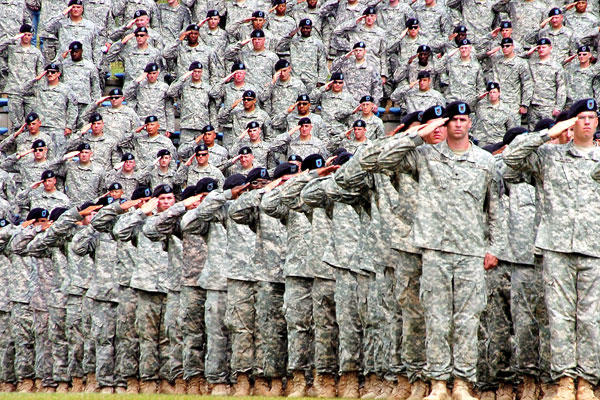The U.S. Army's top enlisted soldier said the number-one readiness problem facing the service is that the active component -- the most deployable force -- has 50,000 soldiers who can't deploy.
That figure represents the largest number of non-deployable soldiers in all three components of the service. The National Guard has 28,000 non-deployable soldiers and the Reserve component has 25,000, according to Sgt. Maj. of the Army Daniel Dailey's office.
Having 50,000 non-deployable, active soldiers is comparable to three of the Army's 10 active combat divisions, Dailey told a group of sergeants recently at Fort Leavenworth, Kansas, according to an Army press release.
"That's huge. That's three out of the 10 divisions," he said. "If you will not or cannot fight and win, then there's no place for you in the Army. We have to become unemotional about this. We have a job to do."
Dailey's comments come at a time when President Barack Obama is under enormous pressure to commit some type of ground force to the Middle East to fight extremists from the Islamic State of Iraq and Syria, or ISIS.
Just days after ISIS attacked multiple civilian targets in Paris, Republican Sen. John McCain and GOP presidential candidate Sen. Lindsey Graham made a renewed push for committing thousands of U.S. ground forces to lead a ground war against ISIS forces occupying large portions of Iraq and Syria.
The active Army is on a path to reduce its size from 490,000 to 450,000 by fiscal 2018.
In total, the Army's active, Guard and Reserve force 102,499 soldiers from all ranks that were non-deployable for medical, legal, or other administrative reasons as of mid-August, according to Master Sgt. Michelle Johnson, spokeswoman for Dailey, adding that that number is about 10 percent of the total force, Johnson said.
This group of non-deployable soldiers does not include soldiers who are transients between duty stations, trainees or students who make up approximately another 10 percent of the force, Johnson said.
Total Army non-deployable numbers have been steadily declining over the past five years. In September 2013, approximately 14 percent of the then-total Army was non-deployable, Johnson said.
As a possible solution, Dailey is proposing to Army Chief of Staff Gen. Mark Milley that in the future, there should be a box to check on the soldier's evaluation form, indicating if that soldier is deployable, according to the Army release. Soldiers with long-term medical profiles would be critically evaluated against their ability to recover and be deployable if called, under his proposal.
Dailey said he wants to incentivize deployments by increasing deployment pay and offering more promotion opportunities.
Of the 50,000 non-deployable soldiers in the active component, about 44,000 are enlisted, 4,000 are commissioned officers and 1,000 are warrant officers.
Medical reasons make up the largest category for non-deployable status, Johnson said. The breakdown for Guard and Reserve components was not available, but on the active side, roughly 37,000 of the 50,000 non-deployable soldiers are unavailable for medical reasons.
Medical reasons are broken into three categories. About 27 percent of the 37,000 are in Category 1, which accounts for short-term medical profiles under 30 days.
About 50 percent of the 37,000 fall under Category 2, which accounts for injuries that require more than 30 days of recovery -- such as a soldier that was playing basketball and tore his ACL and needs surgery, Johnson said.
"The recovery time is three months. He is not going to be discharged from the Army but requires time to recover and do physical therapy," Johnson said.
And about 23 percent of the 37,000 fall under Category 3, which applies to significant injuries such as a soldier wounded by an improvised explosive device or injured in a car accident, Johnson said.
"Even if it's determined that due to medical, administrative or legal reasons, a soldier can no longer continue their service in uniform, these soldiers will be treated with dignity, respect and professionalism because we see them as soldiers for life," Johnson said.
--Matthew Cox can be reached at matthew.cox@military.com.






























